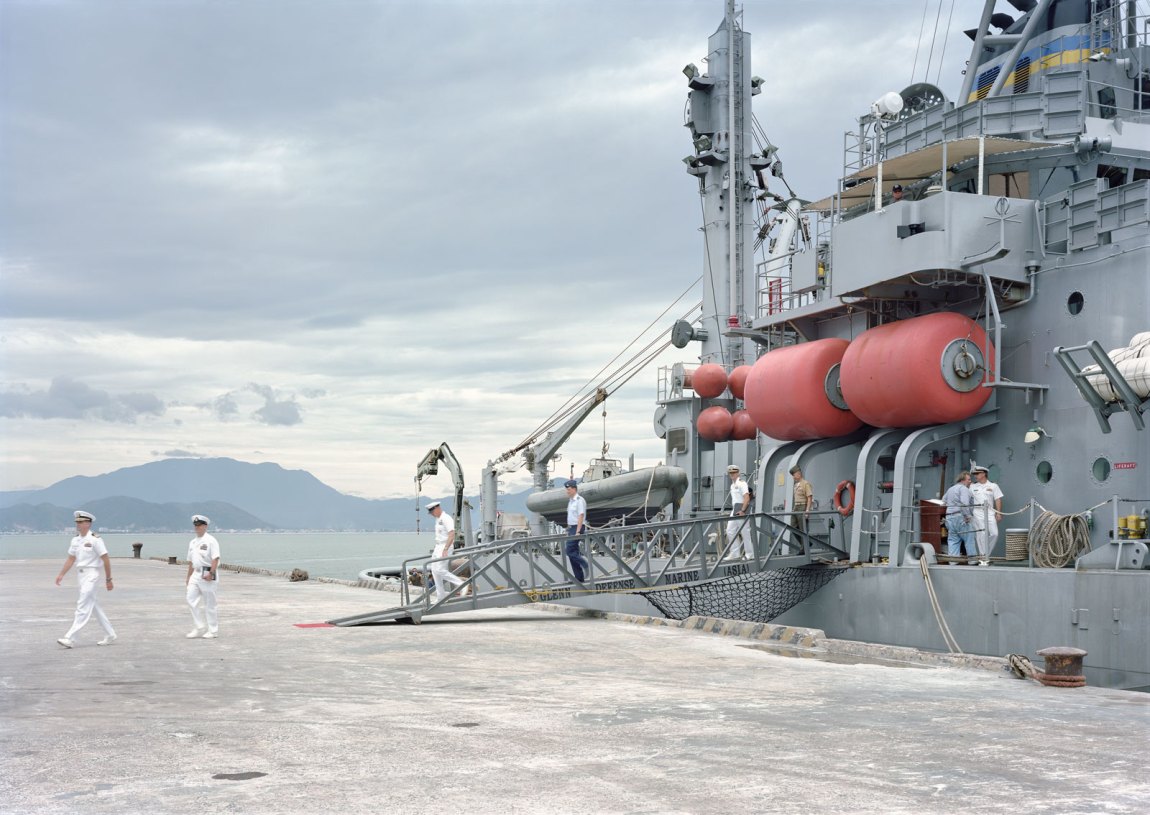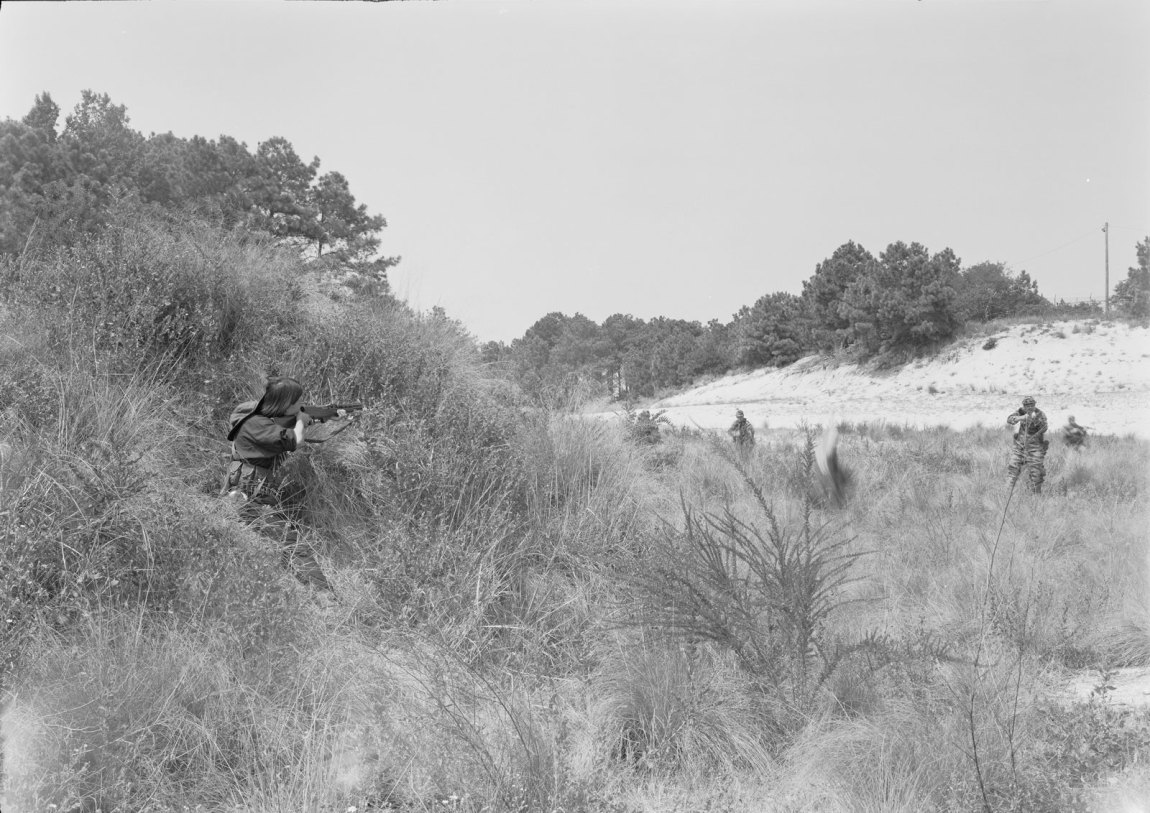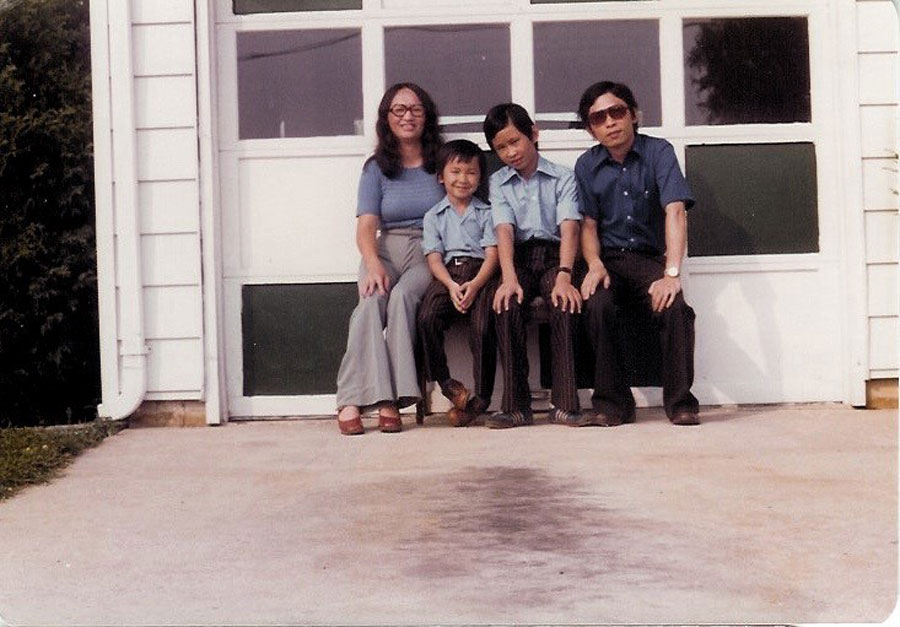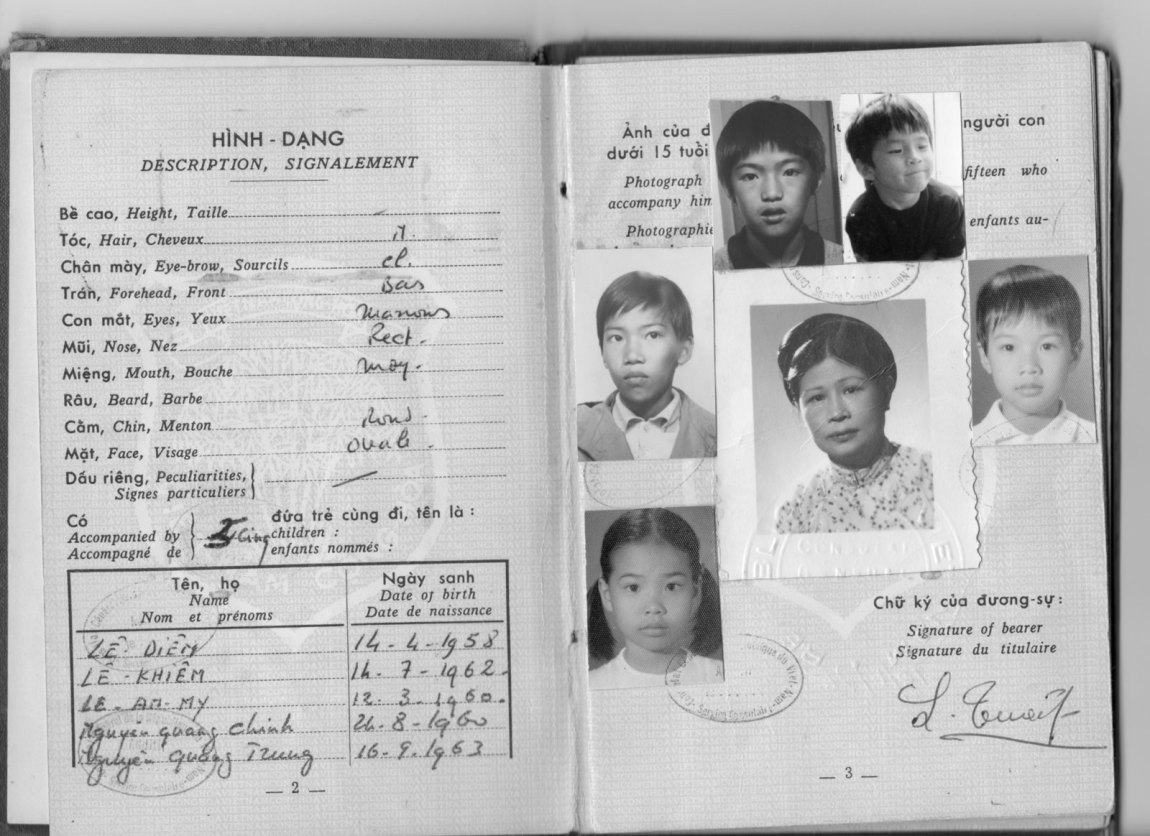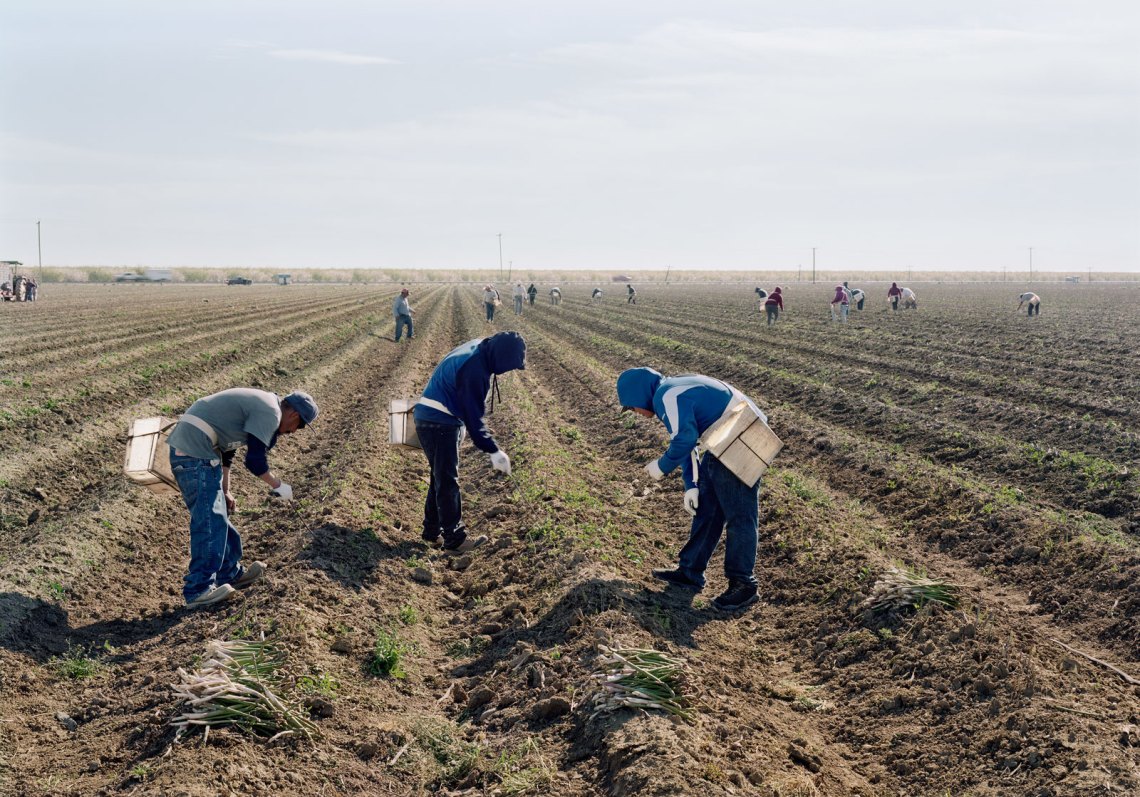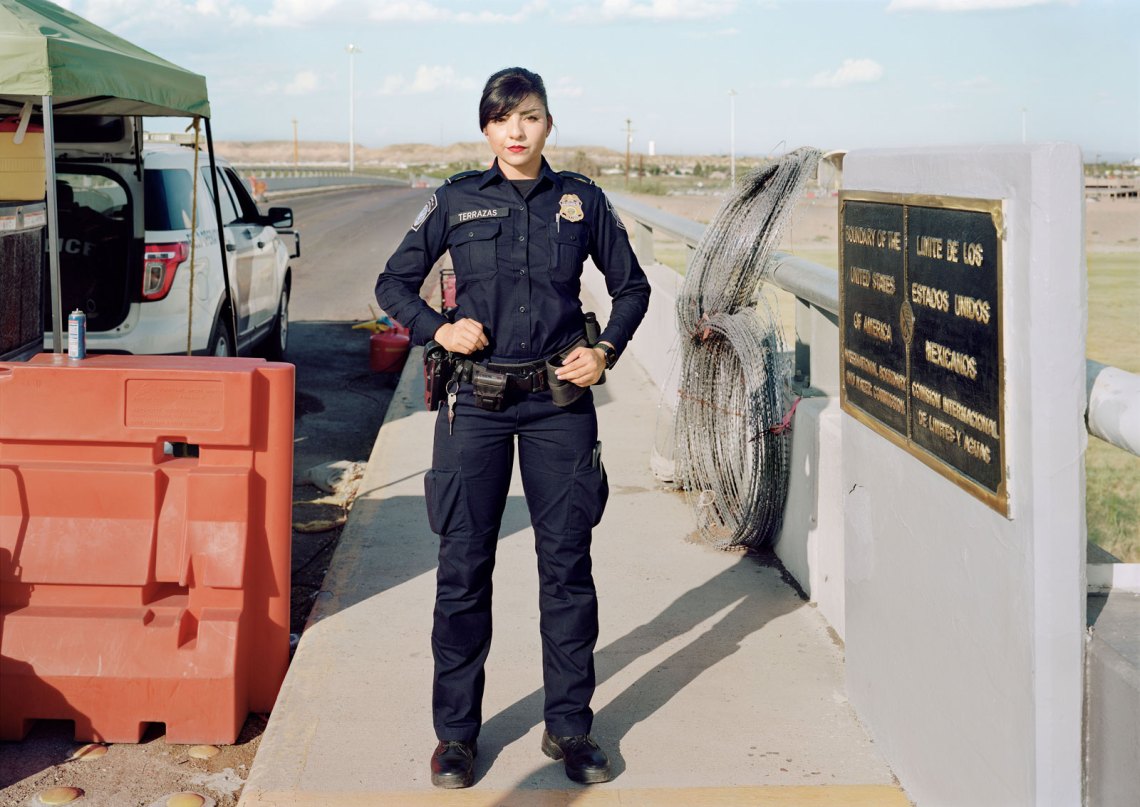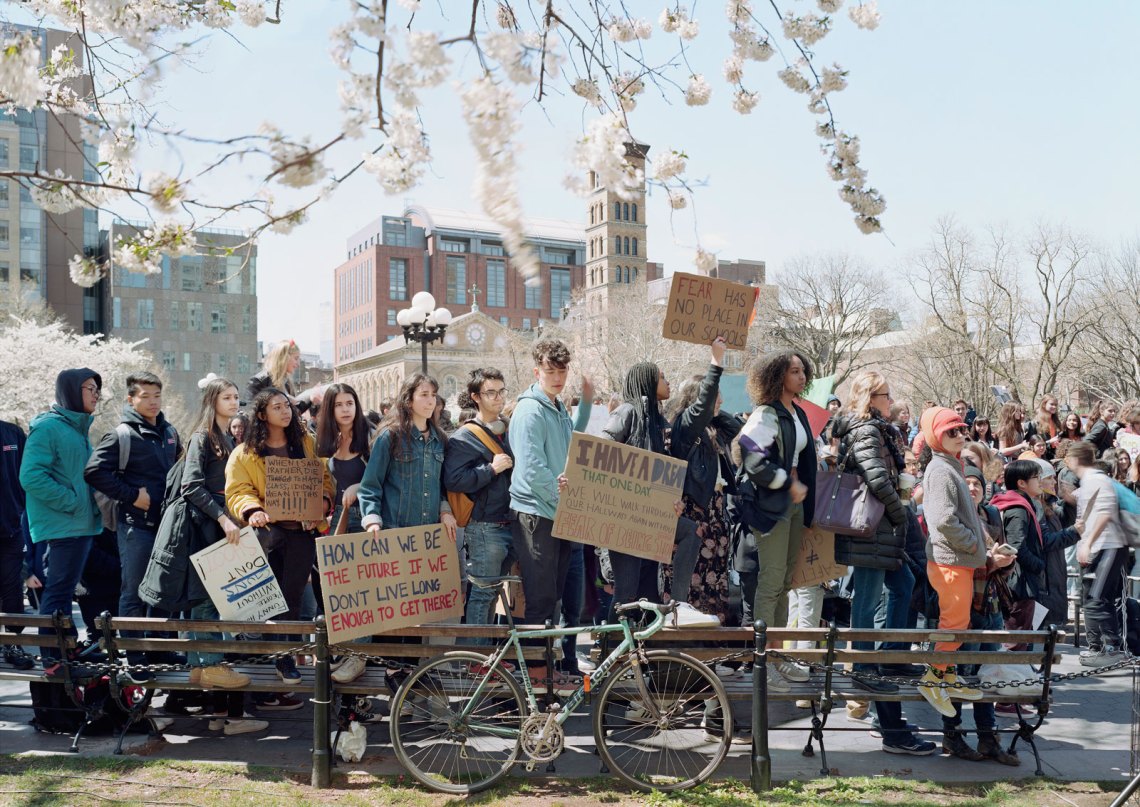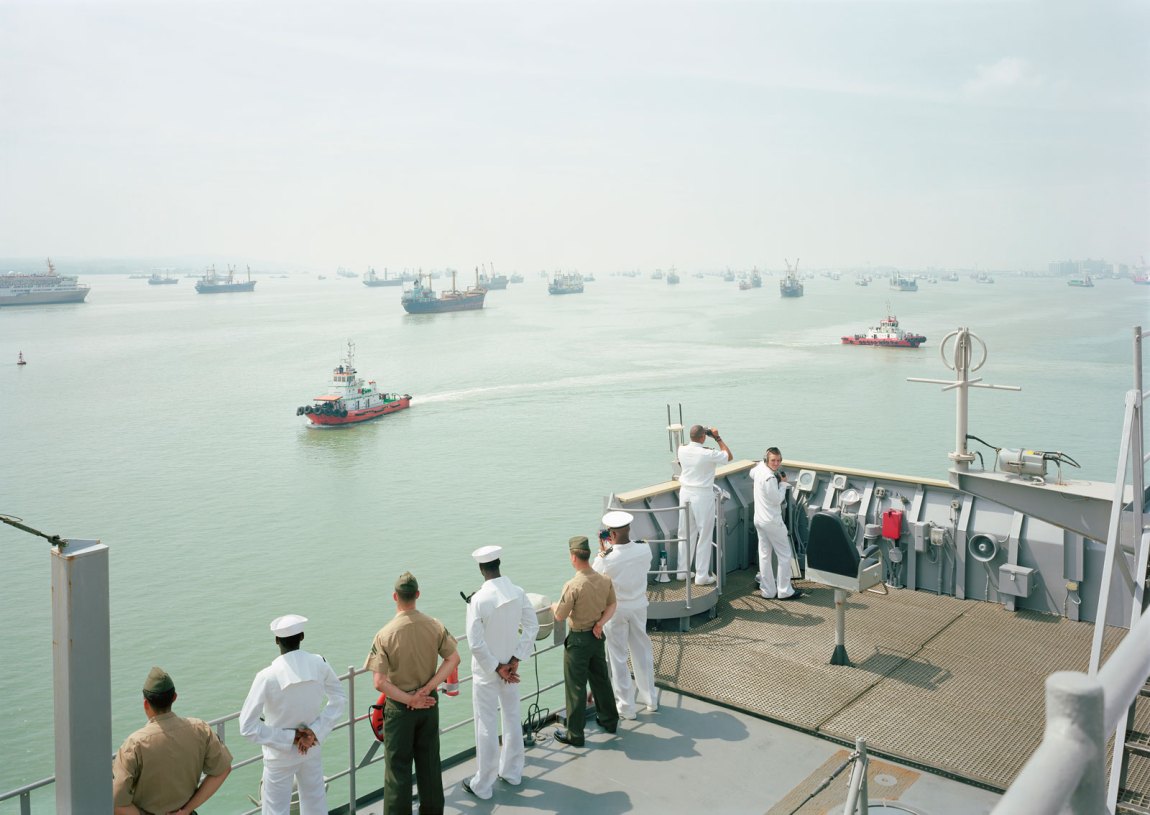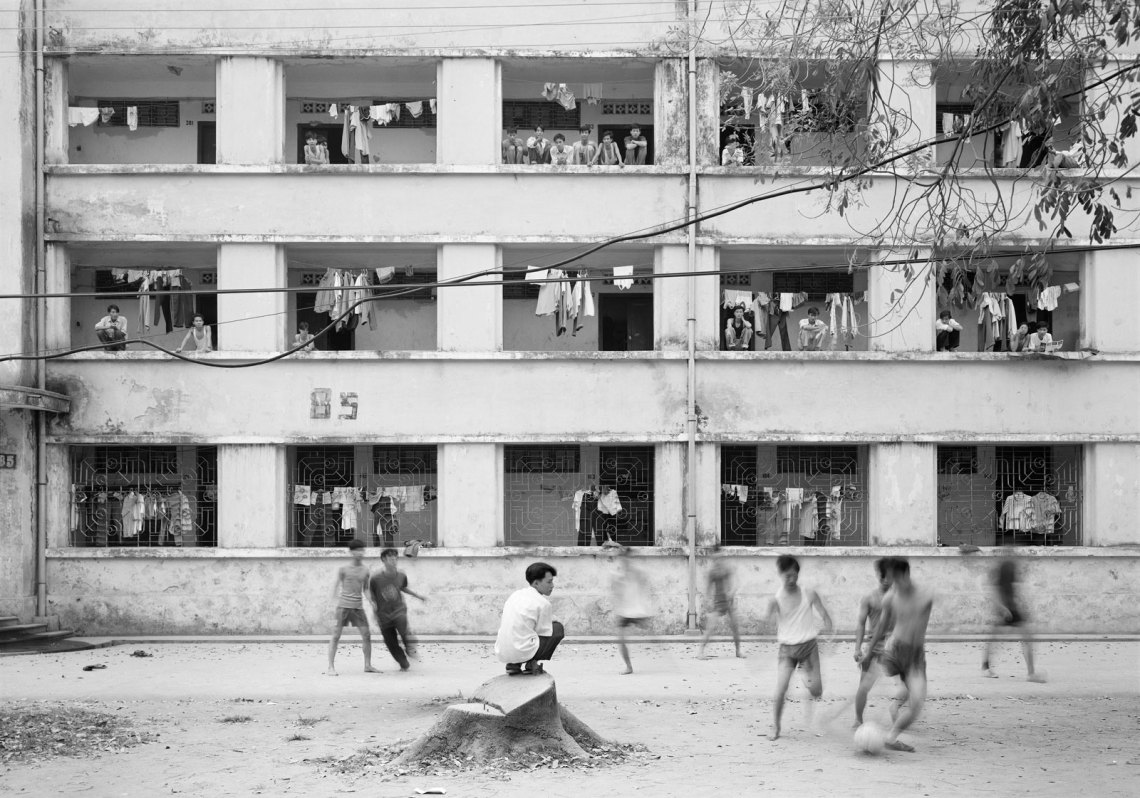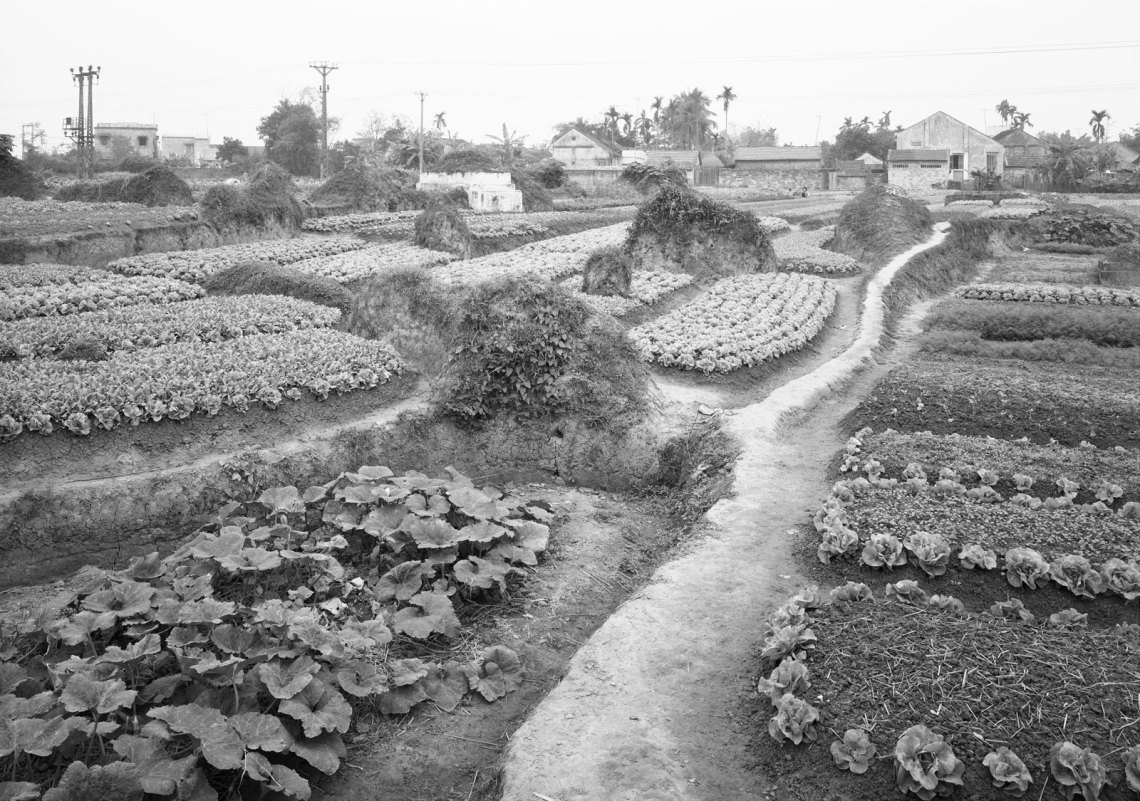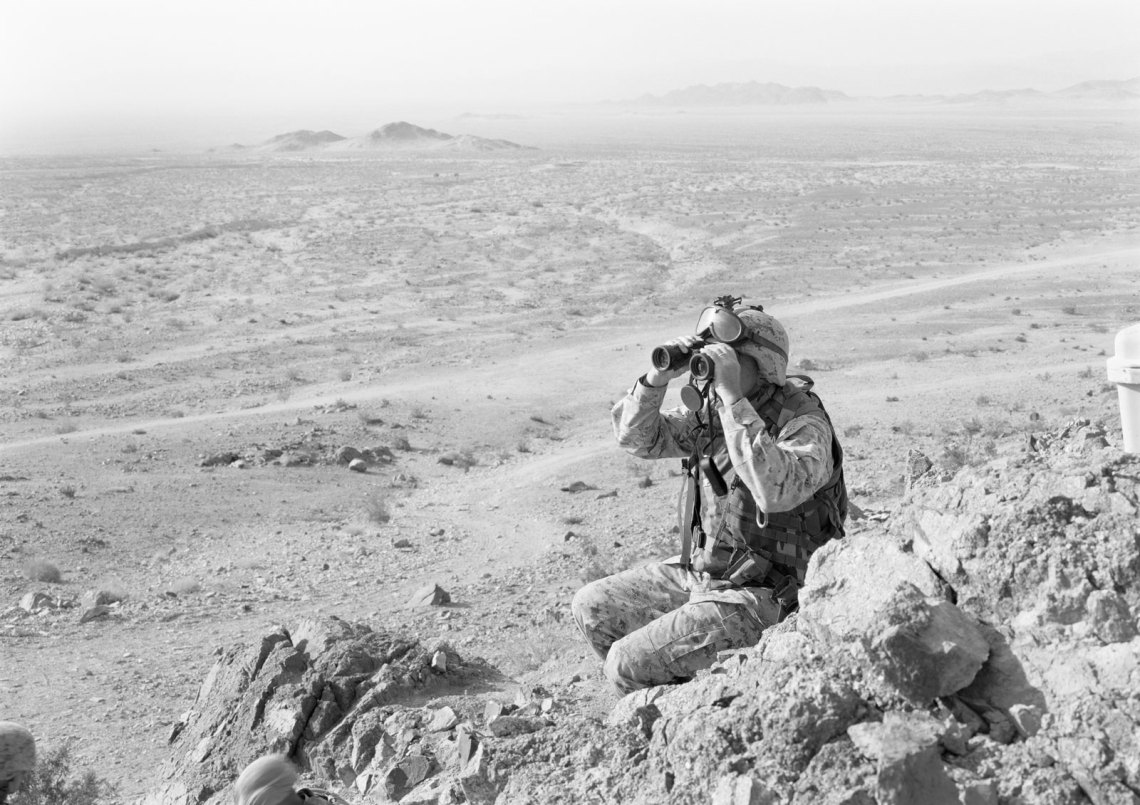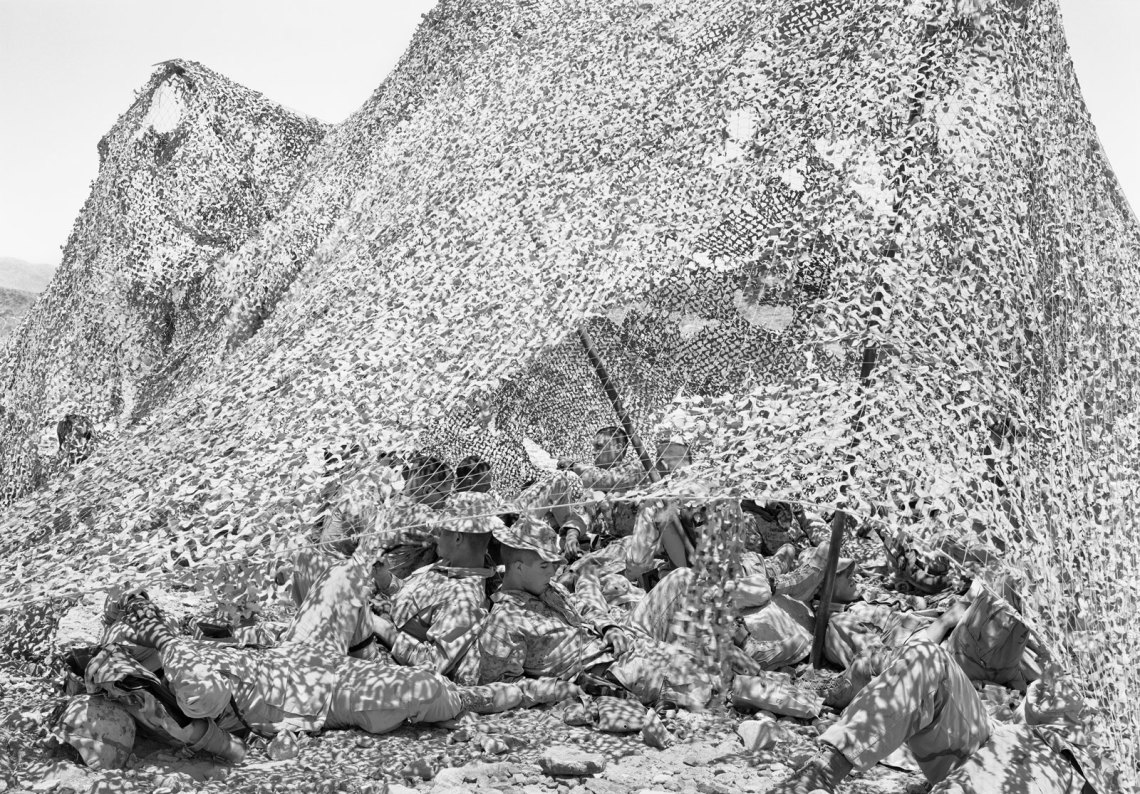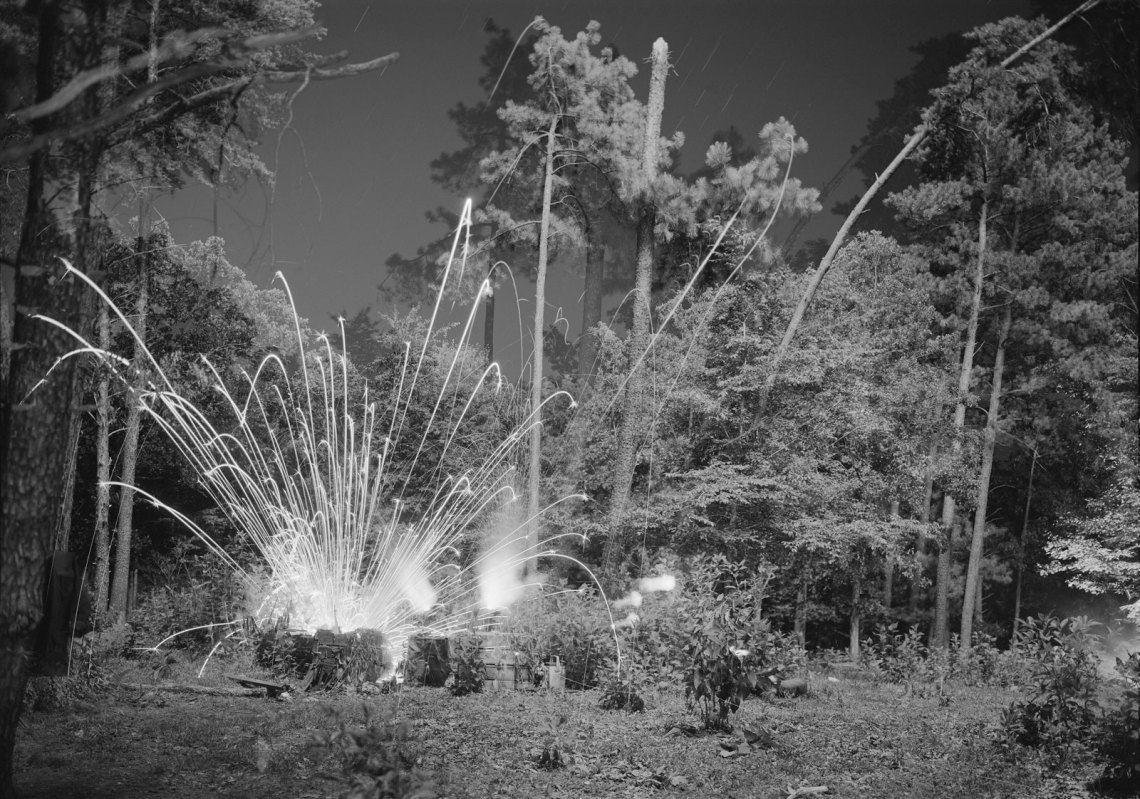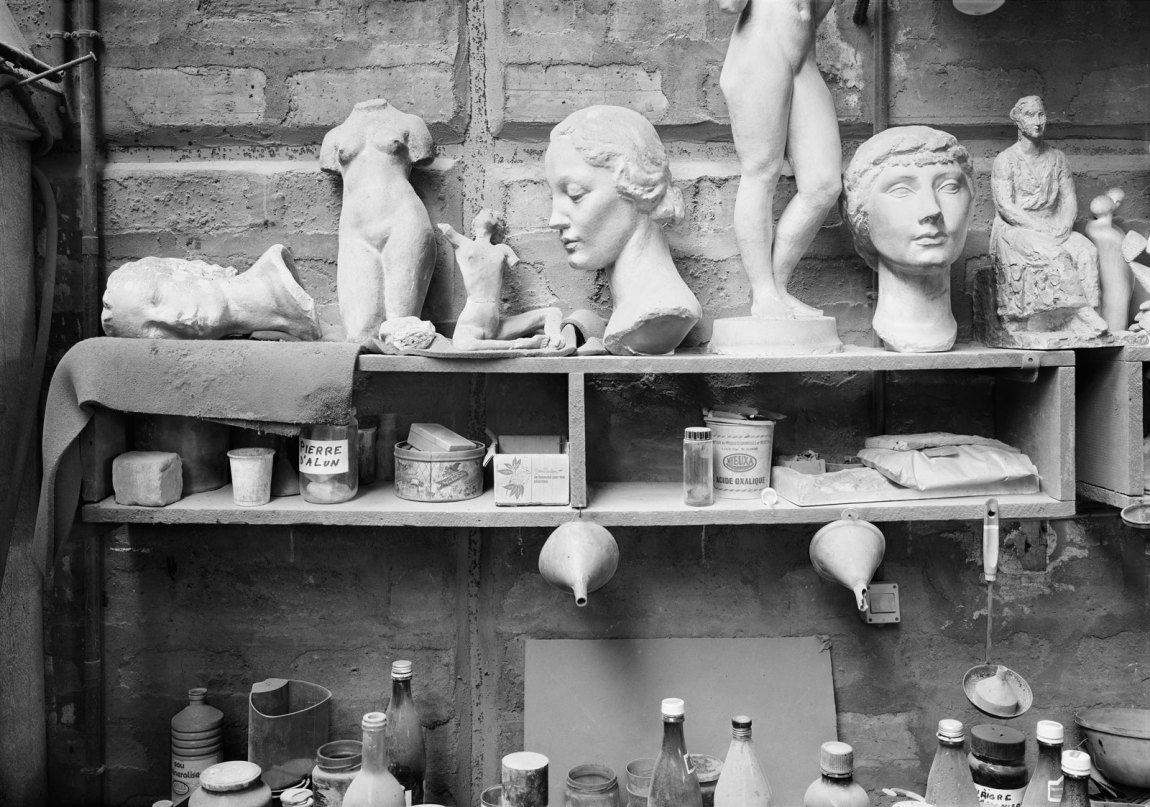An-My Lê first came to my attention through her photographs of American men whose pastime was to reenact battles from the American war in Vietnam, where both Lê and I were born. I was immediately taken with her work, partly because of its artistry and wit, and partly because I was obsessed with the war. The images from her series “Small Wars”(1999–2002) capture the sincerity and the silliness of grown men donning costumes to play at war. They also evoke, perhaps, the sincerity and the silliness of the entire American war effort, if silliness could be used to describe such a tragic event.
When a book of Lê’s work was published in 2005, I wrote about one particular photograph in which she herself appears, playing the part of a Viet Cong guerrilla about to ambush American soldiers. That photograph gestures at wartime images and Hollywood fantasies about the deadly natives, which, when I was growing up as a Vietnamese refugee, were the only depictions I ever saw of people who looked like me. Its humor and self-awareness really drew me in.
Lê has continued to engage with the American war machine in projects like “29 Palms”(2003–2004), which looks at marines training for war in the southern Californian desert not far from where I live, and “Events Ashore”(2005–2014), about life on US Navy ships. What I see in her work—including her current series, “Silent General”(2015–present)—is a deep curiosity about this country’s military-industrial complex, from its personnel to its technology, and also about the invisible ideology that connects it to the lives of the overwhelming majority of Americans who do not serve in the military but are nevertheless a part of the war machine.
If we pay taxes, if we vote for presidents of either party who regularly dispatch the military to extend American interests, if we fund military research and benefit from it, we are a part of that machine. While we usually see only the military part of the machinery, and only through news photographs, movies, and video games, Lê takes a different approach—looking at the war machinery from the inside, as an American, but also from the outside, as a Vietnamese refugee. I am drawn to it because I aim to do something parallel in my writing.
We recently corresponded about our work on the occasion of the exhibition “An-My Lê: On Contested Terrain,” at Pittsburgh’s Carnegie Museum of Art. What follows are edited excerpts from our exchange.
Viet Thanh Nguyen: When we began to correspond last spring, I was quarantined at home in Los Angeles with my wife, six-year-old son, and three-month-old daughter. I was prepared for a crisis—living in earthquake-prone California, my house was already stocked with military and camping rations, three weeks of water, a large supply of toilet paper, a decent amount of sanitizer, bug-out bags for each family member, and ten N95 masks, most of which I donated to a nurse.
I can’t help but believe that my family’s history of fleeing from war and being braced for disaster had some part in getting me to buy these supplies. For me, being, or having been, a refugee has been crucial to my thinking, both in preparing for disaster and in addressing disaster in my fiction and nonfiction. How about you?
An-My Lê: That has been true for me, too. I remember running up to the roof of my West Village apartment building on September 11, 2001, with my husband [the artist John Pilson] and a group of neighbors. We were watching the World Trade Center’s North Tower smoldering when the second airliner flew into the South Tower. My neighbors grabbed onto each other, shrieking. Everyone was hypothesizing about the origins and nature of the attacks. I was stunned, drained of all emotion, and then overwhelmed with purpose. I knew I had to get off the roof, go get cash from the bank, and buy canned food and water. I filled the tub with water before we went out.
This time, after watching the news reports from Wuhan, I made my son go to CVS with me late one night in early February. He indulged me but thought I was an alarmist. I’m sure he felt very silly hoarding more laundry detergent, alcohol, wipes, gloves, bleach, and toilet paper than our family of four could use in two months.
How do you think your wartime experiences in Vietnam influenced your reaction?
During the Vietnam War, I watched my mom organize a pantry room in the back of our apartment in Saigon. We always had enough water, rice, fish sauce, oil, condensed milk, tea, and ruoc—that delicious protein-packed condiment of shredded dry salted pork—to last us for many months in case of an attack. This was supplemented by rows of neatly stacked cans of American fruit cocktail in syrup, mixed vegetables, and Spam funneled from the US military base exchange to the black market. The urgency with which my mom resupplied the pantry was often indicative of the perceived political instability of the South Vietnamese government. Beyond preparedness, I think that my mom was working out her helplessness.
Advertisement
Looking back at my various projects, I can see many parallels. When I photographed the marines training in the California desert after we invaded Iraq in 2003, for “29 Palms,” it was certainly out of despair at seeing the United States step into that conflict and witnessing a new generation of young American men and women being placed in harm’s way. The events leading up to the 2016 presidential election and thereafter also sent me into a tailspin. The rhetoric—talk of civil war and of breaches of the Constitution, as well as calls for halting immigration and building border walls—led me to my current project, “Silent General,” which is a kind of reimagined photographic road trip across America.
When you set out on this road trip, what did you want to photograph for “Silent General,” and what kinds of adjustments have you had to make during the pandemic?
My road trip is not unlike a literary project that unfolds as you go. First, I traveled to Louisiana to photograph contested Confederate monuments. Then I went to the Central Valley in California to photograph migrant workers, and from there, I made my way to El Paso and the Mexico–Texas border. In 2020 I spent time in Washington, D.C., retracing the steps of the Black Lives Matter protesters after the murders of George Floyd and Breonna Taylor and staking out the White House and US Capitol grounds around election time. My work has always been adjacent even though very close to headline news. I tend to be on location before or after the event, but seeing footage of the mob storming the Capitol made me wish I’d been there. It was terrifying to see the seat of government being overrun and the lawmakers and staffers escaping. I don’t mean to be glib but I couldn’t help but think of the Fall of Saigon or the Russians planting their flag on the Reichstag.
Getting out there and bearing witness has been much more complicated during the pandemic. I’ve been taking care of my teenage children, cooking for the family, and of course tending to our supplies. I was embroidering and listening to Julia Kristeva talk about Fyodor Dostoevsky on French radio recently, and I just started reading The Brothers Karamazov. It’s thrilling to me how Dostoevsky’s characters are so specifically of his time and culture while also universal—particularly in relation to our current conversation about cultural narratives.
Who are some of the writers who have influenced you?
Dostoevsky has always been important to me, especially when I was writing my first novel, The Sympathizer. That book is about a Vietnamese Communist spy who comes to the United States after the war, and as I was writing I drew heavily on the Grand Inquisitor scene in The Brothers Karamazov; also on Notes from Underground, which had influenced Ralph Ellison’s Invisible Man, a major influence on me.
My new novel, The Committed, is set in Paris during the early 1980s. It’s a sequel to The Sympathizer, and part of it is about the misogyny of my main character, who has arrived in Paris as a refugee, as well as of Vietnamese and French culture in general. As I wrote, I was thinking about how most of the thinkers and writers I cite in my novels are men. I made one of the characters in The Committed a French feminist, and she throws a copy of Kristeva’s Powers of Horror at the narrator, which he (and I) eventually read—at which point I realized that Kristeva was writing about my sympathizer! Not least because she was writing about Louis-Ferdinand Céline’s Journey to the End of the Night, another major influence on my earlier novel.
Advertisement
How do you think about what’s universal in the human experience when you write, given your decision to focus on the experiences of refugees?
My influences are broad, even if I’m concerned with what some readers might think of as “narrow” issues: the Vietnam War, refugee experiences, radical politics. I don’t think of these as narrow, but they are associated by some with “identity” or “politics,” and “great art” isn’t supposed to be contaminated by such non-universal things. Of course, when I think of so-called universal writers such as Céline or Dostoevsky, I appreciate the wide relevance of their work, but I also think they can be quite narrow in the demographics or history they deal with.
In my mind, the privilege of being considered “universal” and the allegation of having an “identity” are part of a larger crisis, which is where I hope my work points. The Vietnamese have been colonized by the French and occupied or aided by the Americans for generations, depending on your point of view, and our history and experiences are never considered to be as universal as those of the French or the Americans, except by us. Colonization, warfare, capitalism, all of these things that have captured the Vietnamese over the last century and a half are part of a history of crisis for us, the colonized, who are left with only our marginal identities to talk about.
By focusing my work on refugees, I’m not just trying to speak about our “identities,” or engage in “multiculturalism,” or plead for more “representation,” or offer my work as an example of “diversity.” I’m seeking to connect the crisis that made us refugees with the continuing crisis of colonization and occupation that has defined the entire history of the United States. I see in your work some of the same impulse: to capture, in a photograph, an image that is one pixel of a gigantic picture of our militarily saturated society—something that most people cannot even comprehend but that might exist in your perception. Am I reading this impulse correctly?
Like many political refugees who have been evacuated from zones of conflict and brought to safety, I have experienced the military as a very ambiguous and polarizing force, and that’s what I wanted to explore in my work. For “Events Ashore,” I traveled across the globe with the US Navy over a period of nearly a decade. This experience provided me with opportunities to explore what was in my mind a very ill-defined military-industrial complex.
What you may be referring to with the idea of the pixel is the notion of scale. As a landscape photographer, I’m always thinking of context: the individual in relation to the group, the cog versus the power at large. We’ve also spoken, you and I, about how we’ve long wanted to escape the refugee’s dual status as victim and also beneficiary of American foreign policy. In a way, making this work helps counteract the stigma of the refugee experience and provides agency over a legacy that was foisted on us.
We’ve talked about some of the writers who have influenced my work. Who has most influenced yours?
I wrestle with questions of origins and influences. The French photographer Eugène Atget and his best student, the American photographer Walker Evans, have shaped my practice. I care about Atget’s work not only because of my relationship to France—I lived there on and off for ten years, and as a child, I actually walked past Atget’s home on rue Campagne-Première on the way to school for many years—but also because it effortlessly weaves a poetic relationship between past and present. In his photographs, Atget preserved a world of storefronts, buildings, and public spaces that were being destroyed to make way for the modernization of Paris. As for Evans, when I first saw American Photographs in my introduction to photography course, I was immediately drawn to his clear-eyed ability to describe a moment for what it is while suggesting the hidden meaning of things.
But I feel a little self-conscious citing Atget and Evans right now. Having grown up amid the vestiges of French colonization and the full-on display of American imperialism, I’ve spent a lot of my life learning to navigate these underpinnings and struggling with notions of authenticity and identity. How do you argue for authenticity in an identity that grew out of colonized and imperialized cultures? How do you tease out the different strands and get to the place of origin?
How have you tried to reconcile the question of influences with these questions of authenticity and identity?
I have to believe that influences can transcend their sources. I think they sort of find you. Ultimately, what matters most is what you end up doing with them. Every artist forms their own moral universe—not ethical but moral: “I would never do this,” “I could not make work like that.” It is never quite a manifesto but more an aggregate of influences and commitments, a time-tested declaration of values.
In graduate school, I was nudged to draw from my personal experience. This was in 1992, before Bill Clinton lifted the economic embargo against Vietnam, so it was not easy to travel there. Having escaped Vietnam in 1975 without our family albums, I pored through the photography catalogs in the libraries at Yale for references to Vietnam. I was shocked to find devastating images of war, and also patronizing ethnographic photographs taken by European photographers during the colonial period, but nothing else. When I was finally able to travel there a few years later, I made a series of black-and-white photographs, mostly landscapes, that were intended to fill in the gaps that existed between the war documentation and the ethnographic archive.
How do you think your background and early experiences might have influenced the way you write?
My father is a very devout Catholic, as was my mother. Their idea of a fun trip to Europe involved visiting the Catholic shrines of Fatima and Lourdes, and in retirement they went to Mass every day. Their work ethic involved a great deal of discipline, sacrifice, and pain. During our early years in the US, they worked twelve to fourteen hours a day, almost every day of the year, in their grocery store in San Jose. Soon after they opened it, in 1978, they were shot and lightly wounded in an armed robbery. I grew up watching them work relentlessly and deny themselves and their sons most material luxuries—but none of the necessities, which for them were education, food, shelter, and religion.
I hated that lifestyle and wanted to get away from home as soon as I could. Despite the fact that they were Catholic capitalists, I turned out an atheist socialist, and a writer with a Marxist bent. But even though I rejected the content of many of their beliefs, I completely absorbed the form of their beliefs. I, too, work too much, although at the much more luxurious jobs of being a professor and a writer. I also believe in sacrifice, suffering, self-denial, delayed gratification, and so on. I may not have Catholic faith, but I have faith in art and writing as spiritual practices of salvation for both the creator and the audience.
Has religion had any influence on your style? How about questions of authenticity?
My father used to tell me, when I was growing up, that I was 100 percent Vietnamese, which I was skeptical of then and now. I don’t believe in authenticity. But I am still attached to my Vietnamese origins and history and have felt obligated to make sense of them. Nevertheless, I do so in my own way—by complicating models of authenticity that are expected of me by both Vietnamese and Americans. These models are based on a certain kind of faith in the importance of national cultures and the redemptive possibilities of capitalism, which most Americans and Vietnamese refugees share.
I have a different faith, one in which writing is not only supposed to make us feel more authentic but is also supposed to make us doubt that authenticity at the same time. My work has been very much about dealing with what I witnessed happening to my parents and other Vietnamese refugees. The books I’ve written on Vietnam, the Vietnam War, and Vietnamese refugees should, I hope, make many Vietnamese readers feel seen and acknowledged. At the same time, each of these works is aggressively critical of notions of authenticity or any kind of heroic, suffering, victimized images of Vietnamese people. And that might make some Vietnamese readers uncomfortable enough to censor the work (in Vietnam) or refuse to read the work (overseas). I’m all right with that, and I think my conviction that telling my own truth matters above all is something I’ve inherited from a certain strain of the Catholic faith.
Do you feel any tension between what your art demands of you and what other people may demand of you, whether that might be your family, your community (however defined), or your country or countries? If there is a tension, is it a productive one?
I am always feeling tensions—it’s always about my sense of self and relationship to my family, and to the community.
One of the main tensions I had to deal with early on involved my decision to become a photographer. It was a delayed act of rebellion. I was in my mid-twenties and felt so shackled following my family’s plan for me to become a doctor. It took a serendipitous discovery of photography for me to jettison my hard-earned admission to medical school—and also a Vietnamese boyfriend—in one sweep. My parents were devastated and thought I had lost my mind. As much as I was enthralled by photography and realized I had some sort of aptitude for it, I had no idea what kind of life I could or would make for myself. This new chapter was terribly reckless, but somehow I had faith (agnostic in my case) that hard work and persistence would take me to the end. Well…to the end of that particular chapter.
Over the years, I have felt a lot of pressure from certain curators and critics to be clearer about my “opinion” on the subject of war, or on the part of the US military in global affairs. I have always resisted their desire for simplification and rhetoric. Over time, it became easier to speak about this when I learned to tap into my conflicted self.
At times, after I give a talk, I have felt that some young women may be a little disappointed that I don’t define myself in more feminist terms; sometimes, it also seems that the Asian-American students are disappointed that I am not more of a spokesperson for them. I think it would be easy to oblige in either situation, but I would feel deceitful. Being a woman and a mother has certainly shaped my approach and perspective. And being a Vietnamese refugee gave me the urgency to ask certain questions. But I really see myself as an outsider trying to find a voice in a chorus. I am a photographer—an artist, first and foremost—and everything else follows.
I know that your maternal grandmother played a formative part in your life. Can you talk about her and how she inspired you?
I always felt very close to my maternal grandmother, and we lived near her in Saigon. She abruptly decided to move to Paris in the mid-1960s. Eventually, my mom and my brothers and I joined her when my mom received a scholarship to work on her Ph.D., which was about Virginia Woolf and feminism. The idea of spending five years in Paris sounds glamorous, but it was actually very tough. We were separated from my dad and lived with my grandmother in a small apartment in a dreary, low-income housing complex for Catholic parishioners that was given to her through her church network.
I shared a room with my grandmother the entire time. She was a very disciplined and moral person who was also animated by a strong pleasure principle. She spent many days experimenting in her small kitchen while smoking and listening to Trinh Cong Son on her cassette player. Restricted in her choice of ingredients, she tried to replicate the classic Vietnamese dishes that were rarely prepared at home: phở, bún riêu, and bánh cuốn. I was her taster and the prep assistant who ran to the store, confronting dismissive grocers in my search for “Chinese” parsley and chives. She strived to create a semblance of Vietnamese life for us.
Looking back, I realize that I absorbed much of the way she lived her life. She had a strong sense of self, and she was fearless in her own way. She continued to wear the áo dài, a traditional Vietnamese garment, when she went out. Her teeth were lacquered black, and her traditional hair style was also distinctive. There were very few Asians in Paris at the time, so she stood out. She gracefully accepted compliments and ignored the slights. My grandmother embodied that notion of authenticity for me. She felt seen for who she was.


